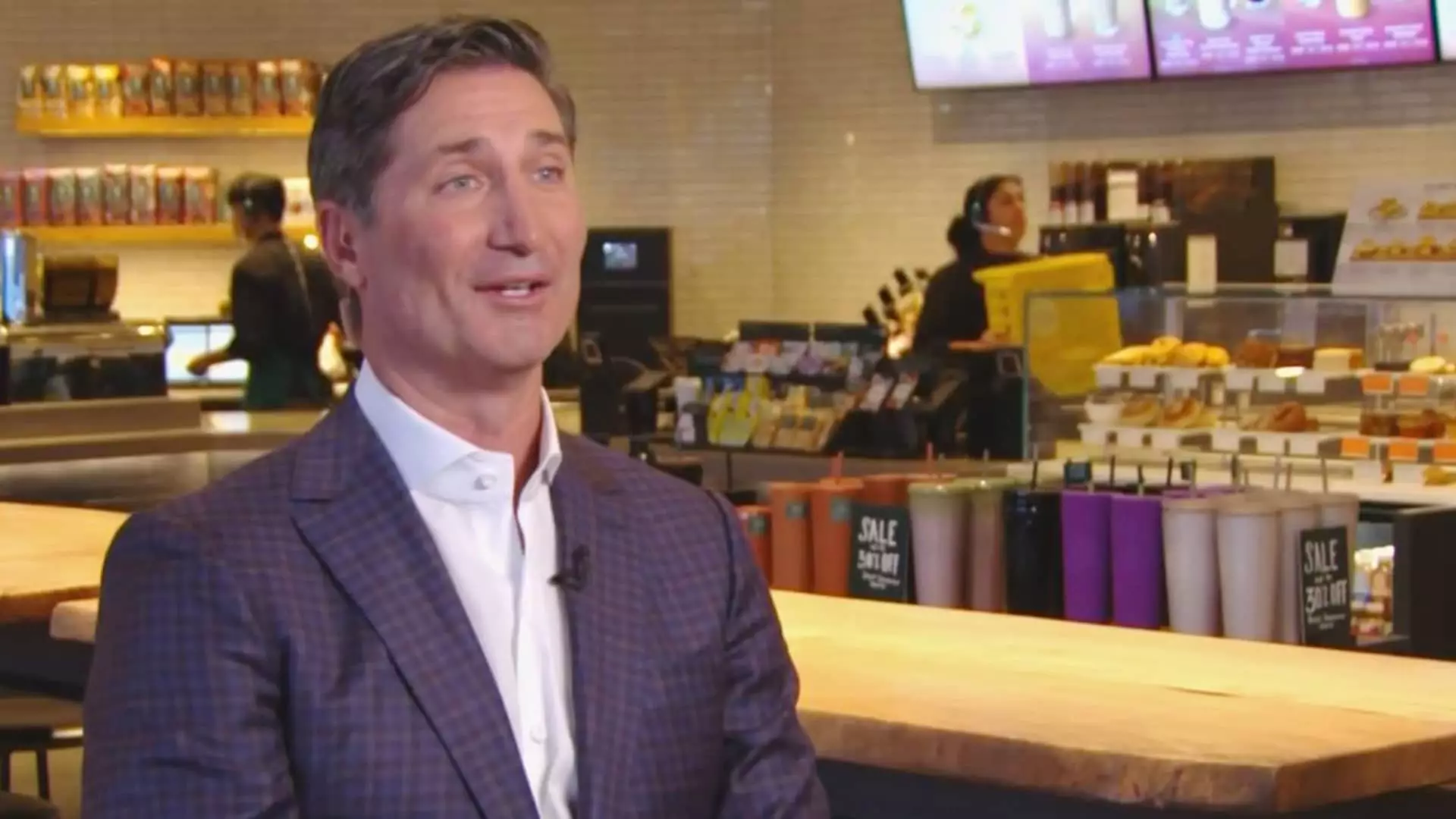Starbucks has found itself grappling with a concerning trend: for three consecutive quarters, its sales figures have dipped. CEO Brian Niccol recently addressed this situation during a quarterly conference call, outlining a series of strategies aimed at revitalizing the brand and restoring its sales momentum. The momentum of Starbucks has been upended and, in response, the company is not just innovating but rethinking its core operations in a bid to foster a more efficient customer experience. The overarching goal is to implement changes that will ensure each customized drink is served within four minutes—currently only half of transactions meet this standard.
To regain control over its operations, the coffee giant is opting for a streamlined approach to its physical locations and a reduction in new openings for the upcoming fiscal year. CFO Rachel Ruggeri noted that fewer renovations and new locations will allow the company to allocate capital more effectively. This revitalization plan captures Niccol’s vision for a more effective Starbucks that prioritizes customer experience while addressing past shortcomings.
A significant issue identified by Niccol is the overwhelming presence of mobile orders in Starbucks cafes, which now account for over 30% of transactions in the U.S. The CEO emphasized the importance of minimizing the challenges posed by this digital ordering method. He is advocating for a more accurate mobile app, which would better inform customers about when their orders are ready and reduce the congestion at pickup areas.
Moreover, there is an intention to establish clearer boundaries around customization options within the mobile ordering platform. Niccol candidly pointed out that excessive customization can complicate the order process for both customers and baristas, leading to inconsistencies in service and product quality. By imposing stricter parameters on how drinks can be customized, the company aims to streamline operations, ensuring that baristas can deliver high-quality drinks consistently.
In tandem with refining mobile orders, Niccol envisions a menu makeover aimed at simplifying choices for customers while enhancing the consistency of service provided by baristas. The notion of a “fewer, better” menu is designed to eliminate less popular items, which tend to slow down service and yield inconsistent quality. This change is expected to alleviate the burden on employees, allowing them to focus on mastering the core offerings. Customers might be disappointed at the removal of certain items, but Niccol argues that improved speed and consistency will ultimately enhance customer satisfaction.
The restoration of Starbucks as a “third place”—a community hub for social interaction—forms the backbone of Niccol’s broader strategy. The CEO is keen on transforming Starbucks locations so they feel inviting and comfortable, urging a return to personalized service elements like serving coffee in ceramic mugs. By focusing on creating a more community-oriented atmosphere, Niccol hopes to reinstate the sociable feel that put Starbucks on the map.
A crucial aspect of Niccol’s plan is to reassess the physical layout and design of Starbucks cafes. He acknowledges that recent design trends have not always prioritized customer experience, particularly with the trend toward pickup-only locations that lack adequate seating. Niccol’s ambition is to infuse old-world coffeehouse warmth into these spaces. He advocates for lounge areas equipped with comfortable seating and personalized attention, which could elevate customer interaction and foster a sense of community.
The reinstatement of condiment bars is another anticipated tweak, aimed not only at streamlining the drink customization process but also at enhancing the overall customer experience. Freeing baristas from routine tasks is expected to allow them to engage more personally with customers, thereby fostering stronger relationships.
Marketing will undergo a significant transformation as well. Niccol is keen to shift focus from promotions aimed predominantly at existing Starbucks Rewards members to broader messaging that emphasizes quality. His background in marketing will likely serve him well in this endeavor. Through strategic efforts, the organization aims to boost the attractiveness of Starbucks coffee and lessen customer reliance on discount offers, which Niccol regards as largely ineffective.
In response to large customer requests, starting November 7, Starbucks will also eliminate extra charges for alternative milk options—allowing customers to save on their favorite drinks. Furthermore, stable pricing is planned for North America throughout the next fiscal year, suggesting an effort to improve customer perceptions regarding value.
Ultimately, Brian Niccol’s strategic overhaul presents a multifaceted approach to steering Starbucks back on course. With targeted changes that promise to enhance customer experiences, refine operations, and restore Starbucks’ community significance, it will be fascinating to see how these initiatives unfold in the months to come.

Leave a Reply